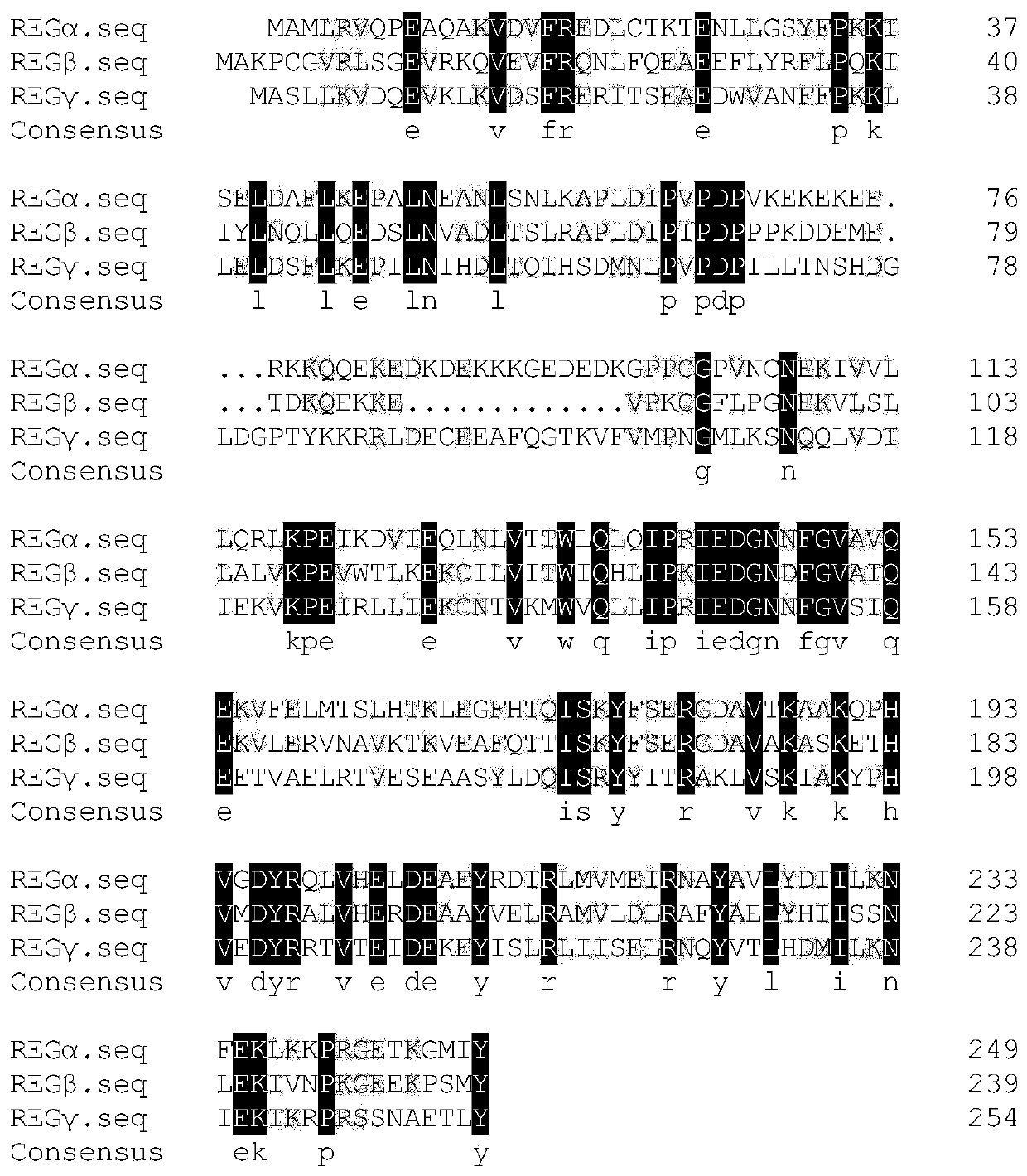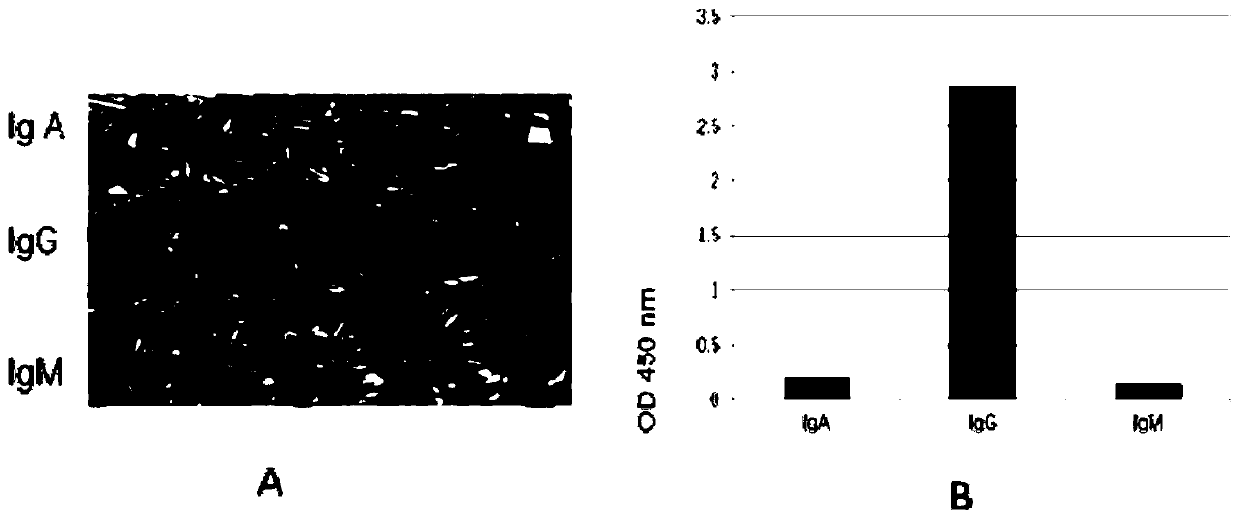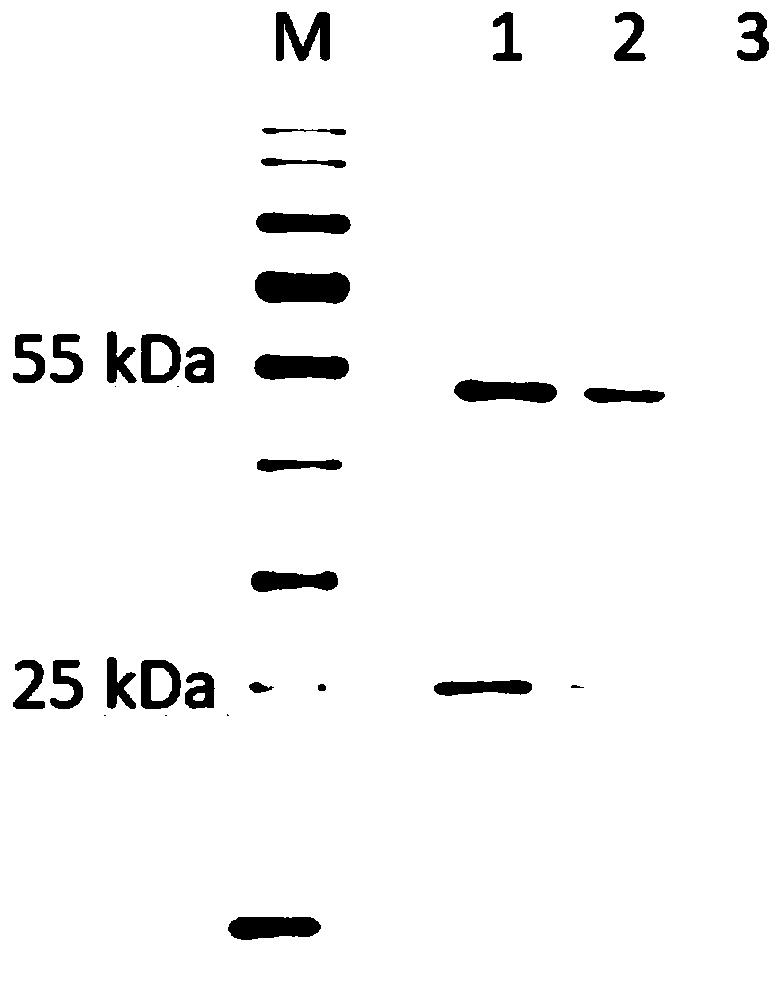Anti-REG gamma C terminal region monoclonal antibody and preparation and application thereof
A monoclonal antibody and regional technology, applied in the field of medicine, can solve the problems of different batches of REGγ antibodies, unfavorable long-term research and use, and large differences in stability, so as to improve objectivity and credibility, convenient and fast detection and Diagnosis, the effect of high sensitivity
- Summary
- Abstract
- Description
- Claims
- Application Information
AI Technical Summary
Problems solved by technology
Method used
Image
Examples
Embodiment 1
[0047] Example 1 Bioinformatics analysis and comparison of amino acid sequence differences of REG family proteins
[0048] Using DNAMAN software to conduct bioinformatics analysis on the protein amino acid sequences of REG family members (REGα, REGβ, REGγ), and design REGγ is different from REGα, REGβ protein sequences and is the most suitable short peptide as an antigen, that is, the 13 amino acids at the C-terminus of REGγ Sequence (IKRPRSSNAETLY (SEQ ID NO: 1), as the target antigen peptide (such as figure 1 ).
[0049] Table 1 Amino acid sequences of REG family proteins
[0050]
Embodiment 2
[0051] Example 2 Preparation, purification and subtype identification of REGγ monoclonal antibody
[0052] The fused cells were selected through HAT selective culture, indirect Elisa screening and subcloning identification, and a cell line stably secreting REGγ antibody was obtained. The REGγ-specific antibody was obtained by expanding the fused cells, enriching the serum-free medium supernatant with proteinG, and concentrating. After identification by indirect ELISA method, the results showed that the REGγ-specific antibody was of IgG type (such as figure 2 A, 2B).
[0053] 1. Antigen preparation
[0054] The 13 amino acid sequence (IKRPRSSNAETLY (SEQ ID NO: 1)) located at the C-terminus of REGγ was used as the target antigen peptide, and coupled with hemocyanin (keyhole limpet hemocyanin, KLH). Then, the above-mentioned peptides were obtained by artificial synthesis as the final antigen.
[0055] 2. Immunization of mice
[0056] The synthesized above-mentioned peptides...
Embodiment 3
[0108] Embodiment 3: the indirect ELISA identification of the monoclonal antibody of the present invention
[0109] (1) Antigen coating: Add the synthesized monoclonal antibody against the C-terminal region of REGγ into a 96-well microtiter plate, and coat overnight at 4°C;
[0110] (2) Aspirate the coating solution, wash with PBST 3 times, 5 min each time;
[0111] (3) 200 μL of 3% bovine serum albumin (prepared in PBS) was added to each well, and blocked at 37° C. for 1 hour;
[0112] (4) repeat the washing method in step (2);
[0113] (5) The above-mentioned screened and cloned hybridoma cell culture supernatant was used as the primary antibody, added to the microtiter plate in an amount of 50 μL per well, and incubated in a 37° C. incubator for 1 h;
[0114] (6) repeat the washing method in step (2);
[0115] (7) Alkaline phosphatase-labeled goat anti-mouse Ig (diluted 1:4000) was used as the secondary antibody, added to the microtiter plate in an amount of 50 μL per we...
PUM
| Property | Measurement | Unit |
|---|---|---|
| molecular weight | aaaaa | aaaaa |
| molecular weight | aaaaa | aaaaa |
| thickness | aaaaa | aaaaa |
Abstract
Description
Claims
Application Information
 Login to View More
Login to View More - R&D Engineer
- R&D Manager
- IP Professional
- Industry Leading Data Capabilities
- Powerful AI technology
- Patent DNA Extraction
Browse by: Latest US Patents, China's latest patents, Technical Efficacy Thesaurus, Application Domain, Technology Topic, Popular Technical Reports.
© 2024 PatSnap. All rights reserved.Legal|Privacy policy|Modern Slavery Act Transparency Statement|Sitemap|About US| Contact US: help@patsnap.com










